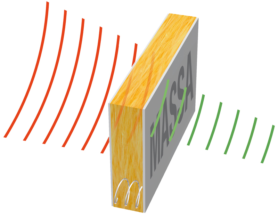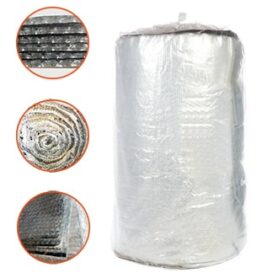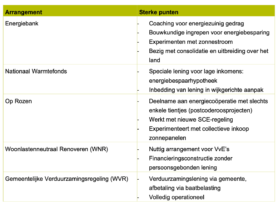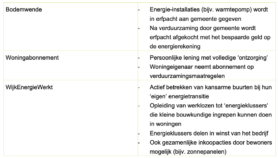Sustainable products
How can you reduce your energy consumption?
By Alissa Kerklingh
New research has shown that energy poverty is a growing problem in the Netherlands. That is why in this article we look at what energy poverty is, what possible solutions are and we provide opportunities to reduce your energy consumption yourself.
ENERGY POVERTY
Energy poverty is a serious problem in the Netherlands. According to Ecorys, 8% of households in the Netherlands were energy-poor in 2018, which amounts to approximately 654,000 households in total. Unfortunately, TNO expects that energy poverty will increase in the coming years as gas prices rise. This may be due to rising gas prices, but also because households do not have the money to participate in the energy transition. Energy poverty means that you spend a large part of your income on paying your energy bill, namely more than 9%. People in this situation often have a poorly insulated house, a low income and therefore a high energy bill. If you live in energy poverty, you often use less energy than you would like because you can’t afford it, or you go into debt because you consume more energy than your budget allows.
Koen Straver, who works at the TNO research institute, has been researching energy poverty for years. Straver says there are often multiple problems in households living in energy poverty. A few examples of these problems are poor quality of living, social isolation, ill health, unemployment and poverty. Energy poverty is then part of a vicious circle of problems. We are learning more and more about energy poverty and researchers are now also looking at the health effects of energy poverty. Straver believes that to gain a better understanding of how energy poverty works, we need to put more effort into measuring this problem.
The government has responded to rising gas prices by making 3.2 billion euros available to compensate households that suddenly have to deal with high energy bills. Of this amount, 500 million is available for medium to small companies. But Straver says that just giving people a little extra money is not the best approach: “I think the best way to tackle energy poverty and the energy transition is to better insulate the houses that are only insulated first. That is where the most profit can be made.” So no general financial compensation, but support people in insulating their house. “In addition, I think it is very important to keep talking with people, so that we know whether we are tackling the problem properly.”
If it’s up to Straver, he wants to give people three tips to avoid getting into energy poverty: save, renovate and change. Saving energy is fairly quick if you gain insight into how much energy something costs and what you can do to reduce it. For example, you could invest in energy-efficient appliances and LED lights in your home. In addition, awareness is also important: turning off the light in the rooms where you are not, for example, or leaving appliances running at night due to the lower energy price can reduce your energy bill.
In addition, when building or renovating a house, the energy efficiency of the house can be taken into account. For example, you can use double glazing, install solar panels and a smart meter can give you insight into your energy consumption.
Finally, a conversation can be held about how we divide energy with each other. For example, is it fair that companies get energy for the same price as households? This conversation is of course not for the average citizen, but still important to mention because it can affect you.
INSULATION
A practical way to ensure that you use less energy in your home is to insulate it better. There are two types of insulation materials: mass insulation and reflective insulation. Both types of insulation will be explained in the text below. If you become enthusiastic and want to get started right away, there are also various initiatives that can support you in making changes in your home.
Mass insulation
Mass insulation (see image below) reduces the rate at which heat is absorbed by a given material. Practically what this means is that you are using thick material to absorb heat. Have you ever heard of spray foam, rock wool, recycled cotton or glass wool? All of these materials provide mass insulation and reduce heat flow out of your home. The way mass insulation works is that the material used contains a large amount of small air bubbles. These act as a barrier for the heat to get out of the material. You could compare these bubbles to a room full of balls that could keep you from getting up and walking out of the room.

Figure 1. Mass isolation (Isover, n.d.)
Reflective insulation
Reflective insulation works as it sounds: heat is reflected, keeping it in the room longer. Materials you could use for reflective insulation are plastic wrap, polyethylene bubbles and cardboard, see the image below for examples. This form of insulation is widely used in attics, roofs and wall systems.

Figure 2. Reflection insulation (1voudigklussen, n.d.)
Especially when people have a small budget, making your home more sustainable can be a financial task. There are therefore already several initiatives that are working on this that you could use! See the table below for an overview of current initiatives that you could contact.


Table 1. Initiatives that support making homes more sustainable (Platform31, 2021)
So there are many possibilities to better insulate your home, and the effects of this can be significant. For example, an average household can save about €1900 per year if it goes from a poorly to a well-insulated house.
There are other reasons why investing in insulating your home is a good idea. It turns out that if you invest in making your home more energy efficient, you often start to behave more energy-efficiently. For example, people who have done this turn off the lights more often, take shorter showers and wash at lower temperatures. Then you are doing twice energy-saving actions!
Energy poverty is a growing problem in the Netherlands, but fortunately there are also possibilities to reduce this energy consumption. Now you know why it can be useful to look at how you can best insulate your house!
Sources
1voudigklussen (n.d.). [Foto van reflecterende isolatie]. https://www.1voudigklussen.nl/product/thermische-reflectie-isolatie-56-mm-dik-75-m2-afm-125-x-06-m/
Aditya, L., Mahlia, T. M. I., Rismanchi, B., Ng, H. M., Hasan, M. H., Metselaar, H. S. C., … & Aditiya, H. B. (2017). A review on insulation materials for energy conservation in buildings. Renewable and sustainable energy reviews, 73, 1352-1365.
Bartram, L., Rodgers, J., & Muise, K. (2010). Chasing the negawatt: visualization for sustainable living. IEEE Computer Graphics and Applications, 30(3), 8-14.
Isover (n.d.). [Foto van massa isolatie]. https://www.isover.nl/over-isover/optimaal-akoestisch-comfort
van Middelkoop, M., van Polen, S., Holtkamp, R., Bonnerman, F. (2018). Meten met twee maten. Een studie naar de betaalbaarheid van de energierekening van huishoudens. PBL
Milieucentraal (n.d.). Isoleren en besparen. Opgehaald op 18 oktober 2021 van
https://www.milieucentraal.nl/energie-besparen/isoleren-en-besparen/
NOS (2021, 15 oktober). Huishoudens krijgen honderden euro’s compensatie voor stijgende energieprijzen. Opgehaald van https://nos.nl/artikel/2401788-huishoudens-krijgen-honderden-euro-s-compensatie-voor-stijgende-energieprijzen
NOS (2021, September 23). Ruim half miljoen huishoudens leven in ‘energiearmoede’. Opgehaald van https://nos.nl/artikel/2398887-ruim-half-miljoen-huishoudens-leven-in-energiearmoede
NOS (n.d.) Stijgende gasprijzen. Opgehaald op 18 oktober van https://nos.nl/collectie/13880-stijgende-gasprijzen
Nu.nl (2021, 15 oktober). TNO verwacht energiearmoede bij nog groter aantal huishoudens. Opgehaald van https://www.nu.nl/binnenland/6162430/tno-verwacht-energiearmoede-bij-nog-groter-aantal-huishoudens.html
Straver, K., Mulder, P, Middlemiss, L., Hesselman, M., Feenstra, M., Tirado Herrero, S. (2020). Energiearmoede en de energietransitie. Energiearmoede beter meten, monitoren en bestrijden. TNO.
Van Lidth de Jeude, M., Noach, C., Handgraaf, M. (2014). Energiebesparing: de relatie tussen verbruiksgedrag en investeren. Rijksdienst voor Ondernemend Nederland.
Westerhuis, M., Leegwater, M. (2021). Verduurzamen met een smalle beurs. Een selectie van arrangementen voor woningeigenaren. Platform31

